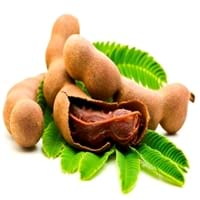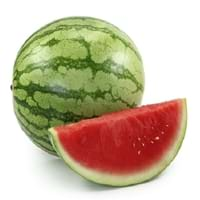Health Benefits
Boosts immune system, Boosts respiratory health, Cancer prevention, Digestive aid, Piles treatment
Anti-aging benefits, Anti-inflammatory properties, Asthma treatment, Body hydration, Cancer prevention, Digestive aid, Skin cleansing, Skin rejuvenation
General Benefits
Beneficial in improving nerve function, Protects against parasites and worms, Relieves pain
Anti-inflammatory properties, Body hydration, Controls blood pressure, Digestive aid, Maintains healthy cholesterol level
Skin Benefits
Anti-aging benefits, Brightens and lightens complexion, Exfoliates skin, Hydrates skin, Treatment of dark spots
Anti-aging benefits, Brightens and lightens complexion, Hydrates skin
Hair Benefits
Prevents hair loss
Promotes longer and healthier hair, Regulates hair growth
Allergy Symptoms
Abdominal pains, Breathing difficulty, Dizziness, Eczema, Fainting, Hives, Itching, Nasal congestion, Swelling of face, Tingling sensation in mouth, Vomiting
Breathing difficulty, Decrease in blood pressure, Dizziness, Eczema, Hives, Runny nose, Swelling of mouth, tongue or lips, Watery eyes
Side Effects
Decrease in blood sugar levels, Induces acid reflux, Allergic reaction, Tooth decay, May form gallstones
Allergic reaction, Bloating, Diarrhoea, Indigestion, Intestinal gas, Nausea, Vomiting
Best Time to Eat
Along with meal, As a snack in the late afternoon, Don't consume at night and before bed, Strictly avoid empty stomach
As a snack in the late afternoon, Don't consume at night and before bed, Eat the fresh ones, avoid mixing with any other foods, don't eat after meal., Strictly avoid empty stomach
Vitamin B5 (Pantothenic Acid)
Vitamin C (Ascorbic Acid)
Vitamin K (Phyllochinone)
Calories in Fresh Fruit with Peel
Not Available
Not Available
Calories in Fresh Fruit without Peel
Calories in Frozen Form
Not Available
Calories in Canned Form
Not Available
Not Available
Type
Tropical
Berry, Melon
Season
Spring, Summer
Summer
Varieties
PKM 1, Urigam, Hasanur, Tumkur prathisthan, DTS 1 and Yogeshwari
Sugar Baby, Sangria, Golden Midget, Starlight, Jubilee, Starbrite, Extazy, Stars 'n' Stripes, Mickylee, Yellow Baby, Yellow Doll, Little Baby Flower, Sweet Favorite and Cream of Saskatchewan
Color
Brown, Reddish-brown
Canary yellow, Coral red, Orange, Salmon yellow, Scarlet red, White
Shape
Curving Cylinder
Round
Origin
Africa
Southern Africa
Soil Type
Loam, Sandy, Sandy loam, Well-drained
Sandy, Well-drained
Climatic Conditions
Humid to dry, Rainfall, Warm to hot climate
Dry, Hot
Facts about
- Tamarind is used to prevent body odor.
- African children use the tamarind seeds in games.
- No cases of tamarind toxicity or allergy reported till date.
- Watermelon contain 91% of water.
- In Japan & Chine, watermelon is a popular gift to bring a host.
- Entire watermelon is edible, even the rinds & seeds.
- There are more than 1200 varieties grown in the world.
Other Countries
Africa, Australia, Brazil, China, Mexico, Nigeria, Sudan, Taiwan
Algeria, Brazil, Egypt, Iran, Kazakhstan, Mexico, Spain, Turkey, United States of America
Top Importer
United States of America
Germany
Top Exporter
Thailand
China
Botanical Name
Tamarindus indica
Citrullus Lanatus
Synonym
Tamarindo, tamarindus
Citrullus vulgaris
Subkingdom
Tracheobionta
Tracheobionta
Division
Magnoliophyta
Magnoliophyta
Class
Liliopsida
Magnoliopsida
Subclass
Rosidae
Dillenhidae
Order
Fabales
Cucurbitales
Family
Fabaceae
Cucurbitaceae
Genus
Tamarindus
Citrullus
Species
Tamarindus indica
C. lanatus
Generic Group
Tamarind Sub
Gourd
Difference Between Tamarind and Watermelon
We might think that Tamarind and Watermelon are similar with respect to nutritional value and health benefits. But the nutrient content of both fruits is different. Tamarind and Watermelon Facts such as their taste, shape, color, and size are also distinct. The difference between Tamarind and Watermelon is explained here.
The amount of calories in 100 gm of fresh Tamarind and Watermelon with peel is Not Available and Not Available and the amount of calories without peel is 239.00 kcal and 30.00 kcal respectively. Thus, Tamarind and Watermelon belong to High Calorie Fruits and Low Calorie Fruits category.These fruits might or might not differ with respect to their scientific classification. The order of Tamarind and Watermelon is Fabales and Cucurbitales respectively. Tamarind belongs to Fabaceae family and Watermelon belongs to Cucurbitaceae family. Tamarind belongs to Tamarindus genus of Tamarindus indica species and Watermelon belongs to Citrullus genus of C. lanatus species. Beings plants, both fruits belong to Plantae Kingdom.









